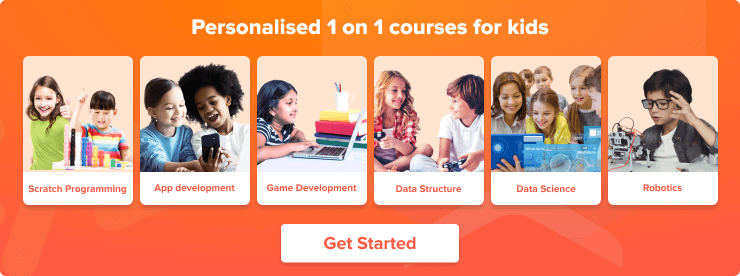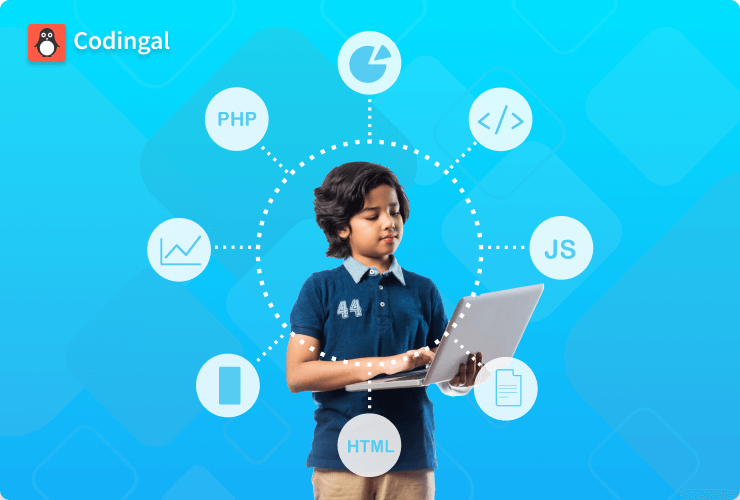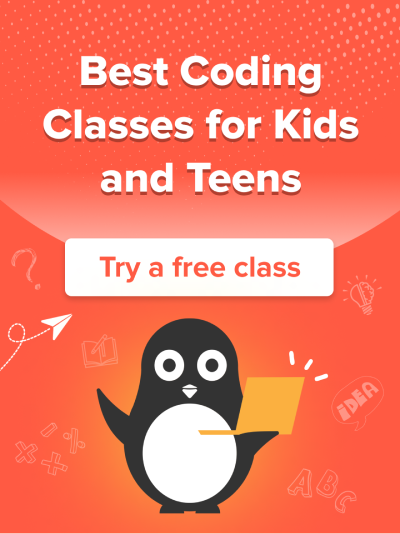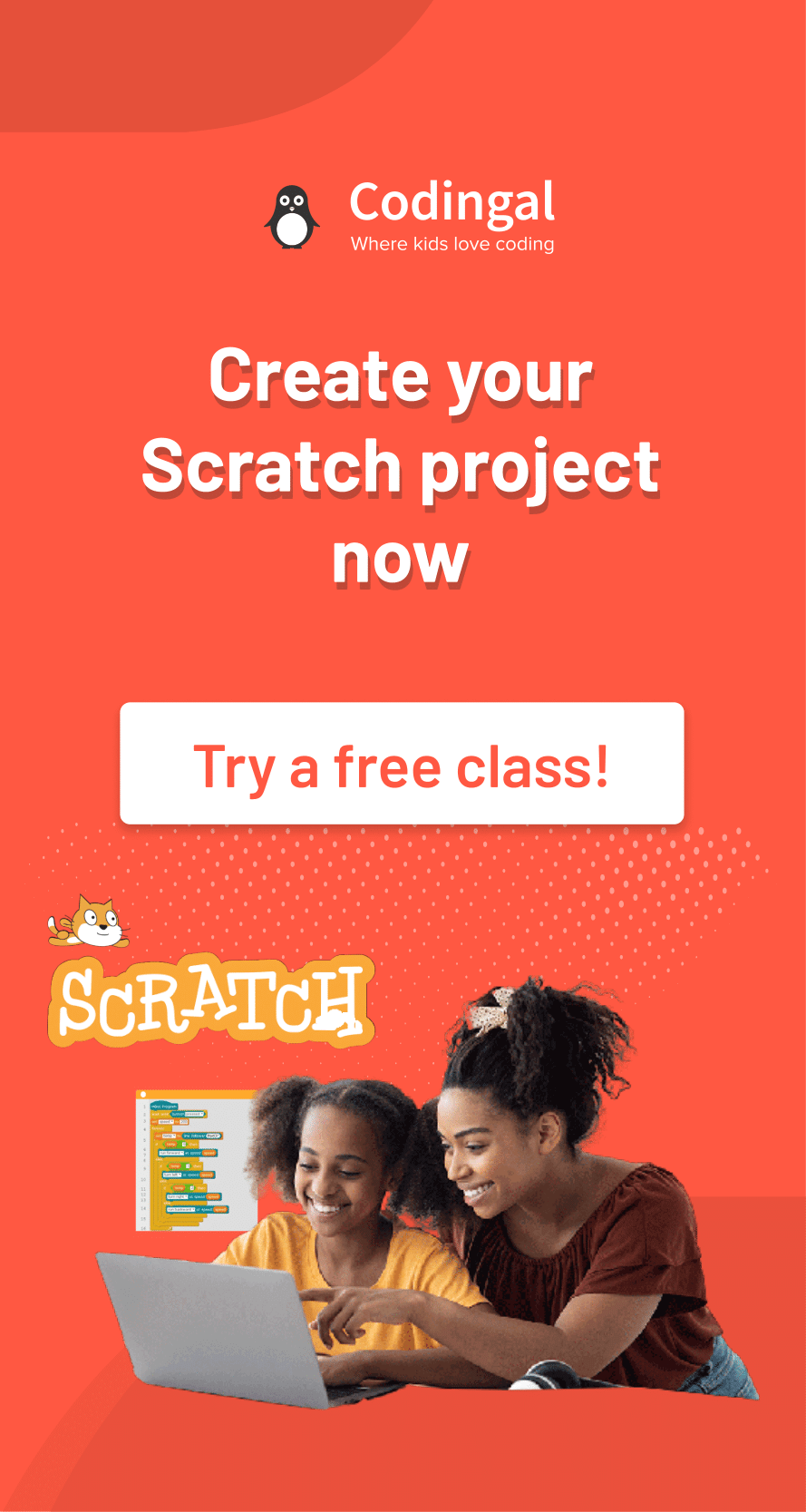Programming has become an essential skill for everyone to possess in today’s world, especially for the younger generation. Starting early with programming will make sure that the children are already ahead of their peers in the future who missed the advantage of learning to code at an early age.
Introduction
Learning to code can sometimes be seen as challenging, especially for kids who are just getting started. Thankfully, there are specific programming languages for every skill and experience level. As there are many programming languages for kids to learn, it becomes challenging to decide which one is the best.
We’ve come up with a curated list of some of the most fun, useful, and even challenging programming languages for kids. These can be quickly learned by choosing an appropriate platform that provides online coding classes for kids.
The tops 8 programming languages for kids are Scratch, Python, Java, Ruby, C++, Swift, Lua, Alice.

Scratch
Scratch is an interactive, drag-and-drop programming language that allows users to make animations and games. It’s perfect for beginners, as it helps them understand the logic of programming without any prior knowledge. The learning gained in Scratch can then be applied to real programming languages.
It’s a block-based programming language that works on a visual interface. The best part about scratch is that it comes with video tutorials that help kids to learn to program.
Pros: Block-based programming, easy-to-use and kid-friendly interface, beginner tutorials support
Cons: Mostly suitable for beginners, doesn’t help kids learn real programming
Python
Python for kids is one of the easiest programming languages. It requires only a few code lines to get started and is very easy to understand, even for beginners. Python is used in most advanced fields like cybersecurity, artificial intelligence, data science, and web developments.
It’s the most versatile programming language used to create numeric and scientific computing projects. Many of the common functionalities that programmers need are already built-in, which makes this a great language for kids to learn.
What is Python used for?
Python is a general-purpose programming language popular for its simple programming syntax, code readability and English-like commands. It’s often used to build websites and software.
Pros: Uncomplicated syntax, versatile programming language, pre-built functionalities, huge & supportive online community
Cons: Doesn’t support mobile app development, speed limitations
Java
Java is one of the most popular programming languages for kids. It is widely used for developing applications on Android platforms. Java is easy to learn, whether kids are brand new at coding, or interested in learning an additional new language.
For kids who love Minecraft, Java is likely the best language to start with as Java is the language of Minecraft. With its English-like syntax, Java is easy to understand and quick to learn.
Applications built with Java are more robust as they are measurable and scalable. However, Java takes longer to master compared to other programming languages.
Is Java suitable for kids and beginners?
Java is easy to learn, whether kids are brand new at coding, or interested in learning an additional new language. Java can be taught from the introductory level with specially designed Java classes for kids.
Pros: Highly adaptive language, suitable for developing apps and games, massive backend environment, graphical interface support
Cons: Challenging for beginners, takes longer time to learn
Ruby
Ruby is a dynamic, open-source programming language with a focus on simplicity and productivity. It’s super easy to learn and makes coding as uncomplicated as possible. Ruby is most used for building web applications.
The best part about this programming language is that most of the codes are self-explanatory. What’s more, its syntax is so high-level and easy to understand that it’s considered as close as you can get to coding in English.
What is Ruby programming language used for?
Ruby is most used for building web applications. However, it is a general-purpose language similar to Python. Ruby’s syntax is simple, easy to read, and similar to the English language. As a result, it’s a great language for beginners.
Pros: Object-oriented language, easy to learn, case-sensitive, robust language
Cons: Less flexibility, slow processing
C++
C++ is a general-purpose programming language and is widely used for competitive programming. It’s one of the evergreen programming languages and is loved by millions of software developers.
It looks more like math, and sometimes many students drop the idea of learning it due to this reason. Once the fundamentals of C++ are cleared, it becomes less complicated to learn and opens many new doors in programming.
Learning C++ provides a profound understanding of programming through which students can create multiple apps, system software, and games.
Pros: Used to develop cross-platform games, general-purpose programming language, great choice to learn gaming
Cons: Challenging for beginners, supports platform-specific applications only

Swift
Swift is a convenient language to write software, whether it’s for phones, desktops, servers, or anything else that runs code. It’s a safe, fast, and interactive programming language. For students, learning Swift has been a great introduction to modern programming concepts and best practices.
Swift programming skills can be applied to a broader range of platforms, from mobile devices to the desktop to the cloud. The best part about Swift is that it works on a simple drag and drop functionality, which is super convenient to use for development purposes.
Is Swift programming easy?
If you can pick up the basic concepts of programming language, Swift should be reasonably easy to learn. The best part about Swift is that it works on a simple drag and drop functionality, which is super convenient to use for development purposes.
Pros: Open-sourced and easy to learn, fast and interactive language, best for developing apps on iOS platforms, works on drag and drop concept
Cons: The language is still quite young and the talent pool is limited, low compatibility with the third-party tools
Lua
Lua manages to stand out from the crowd, but it is still relatively unknown. This language has been used for well over two decades. However, it’s rarely used as a standalone programming language. Instead, developers usually use it as an embedded scripting language for individual programs.
Lua has mainly been used in video games and game engines, but it’s also used as a programming language in many network and system programs.
Recently Lua has gained a lot of popularity and is used by well-known companies like Shopify, Tokopedia, Roblox, and many more.
What is Lua used for?
As the primary focus on Lua is for scripting, it is rarely used as a standalone programming language. Instead, it is used as a scripting language that can be integrated (embedded) into other programs written in mainly C and C++.
Pros: Fast in execution, highly extendable, easy to learn, free to use
Cons: Small standard library and user community, lack of built-in functionalities
Alice
Alice is an innovative block-based programming environment that makes it easy to create animations, build interactive narratives, or program simple games in 3D. Unlike many of the puzzle-based coding applications, Alice motivates learning through creative exploration.
Alice is designed to teach logical and computational thinking skills, fundamental principles of programming and to be the first exposure to object-oriented programming. It works on a drag and drop approach, which makes it a great choice for kids to learn to code and have fun at the same time.
Is Alice programming good for kids?
Alice is an innovative block-based programming environment that makes it easy for kids to create animations, build interactive narratives, or program simple games in 3D.
Pros: Works on drag and drop concept, object-oriented programming, simple to learn
Cons: Very laggy compared to other programming languages, challenging for beginners
Conclusion
These are some of the best programming languages that kids can learn. Learning to code at a young age would prepare kids for a lifetime of success. Starting early with programming gives a competitive advantage for kids to stay ahead of their peers.
It also becomes important to choose the best platforms offering quality and value-added coding education. It makes the next-generation virtual coding classrooms and online learning fun and effective.
Codingal provides the most accessible and enjoyable path to learning how to code—kids have so much fun that they hardly realize they’re learning at all. Book a free trial class today!














